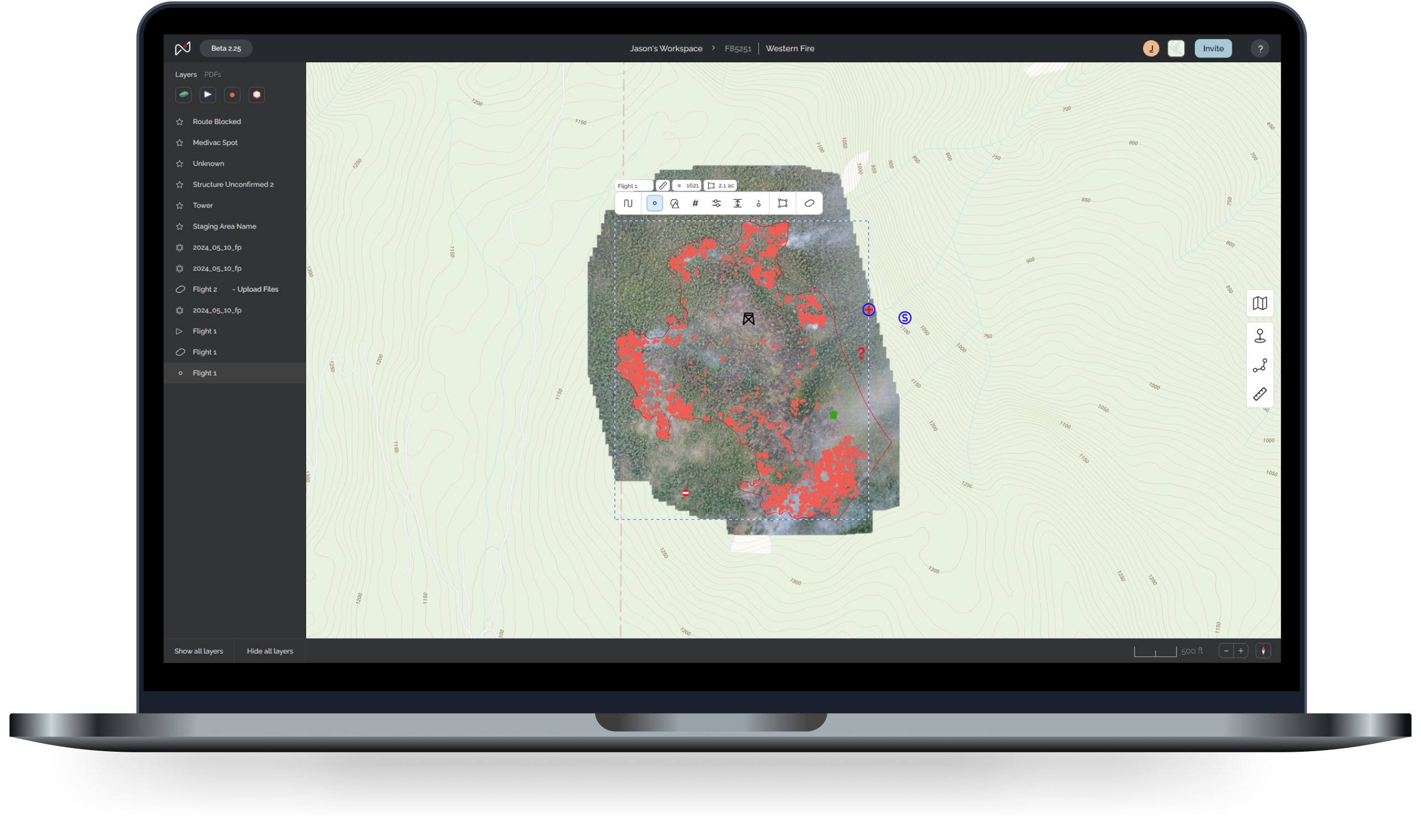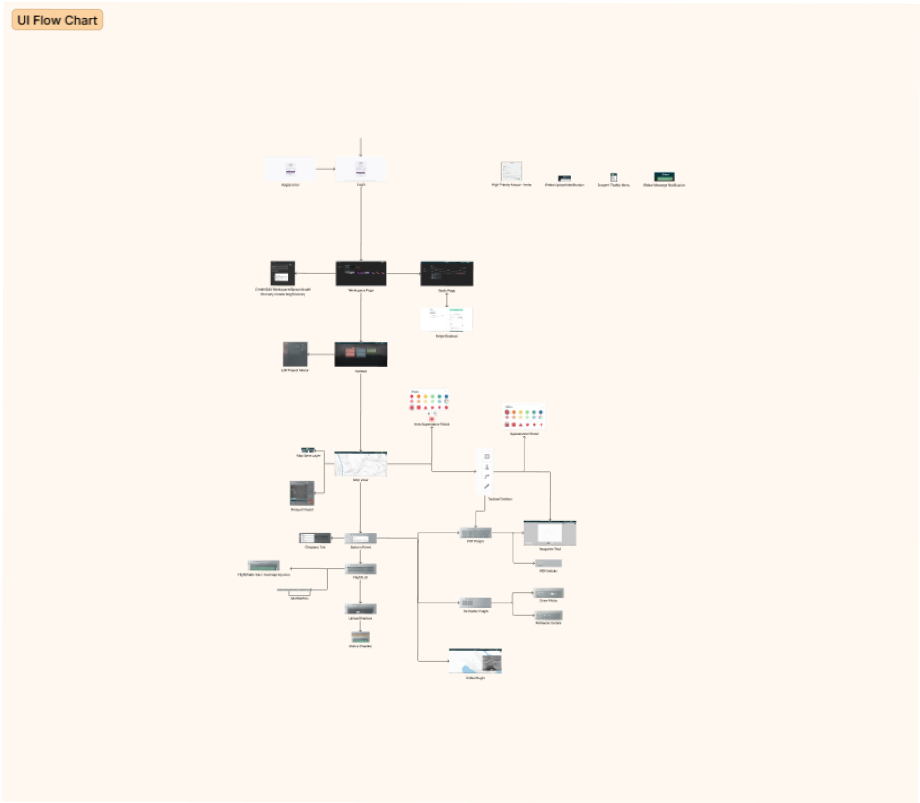My Experience Designing Nova

OVERVIEW
Nova (formerly Fire AI) began as an AI hotspot detection software with the vision of providing first responders the tools to new wildfires before they grow uncontrollable with the use of drones.
My time working on Nova involved creating an MVP, transitioning it into an open beta, facilitating a rebrand and expanding features to fit different markets.
ROLE
Designer
UX, UI, Scrum master
2022 - Present
PROBLEM
Traditional wildfire suppression for first responders involved a large team who would form a line and scan within the fire perimeter- costing a lot of resources and time. Soon after, helicopters would be flown overtop to scan the areas. While this was safer, it did not reduce the high costs to organize a helicopter operation with a pilot and crew, sometimes requiring helidrops into inaccessible areas by vehicles.
GOAL
Utilize the growing adoption of unmanned aerial vehicles (drones) as the aircraft that scans and captures infrared data to upload into an artificial intelligence model. This model would automatically detect hotspots and plot it onto a map to reduce costs, save time and ensure greater safety for first responders.

